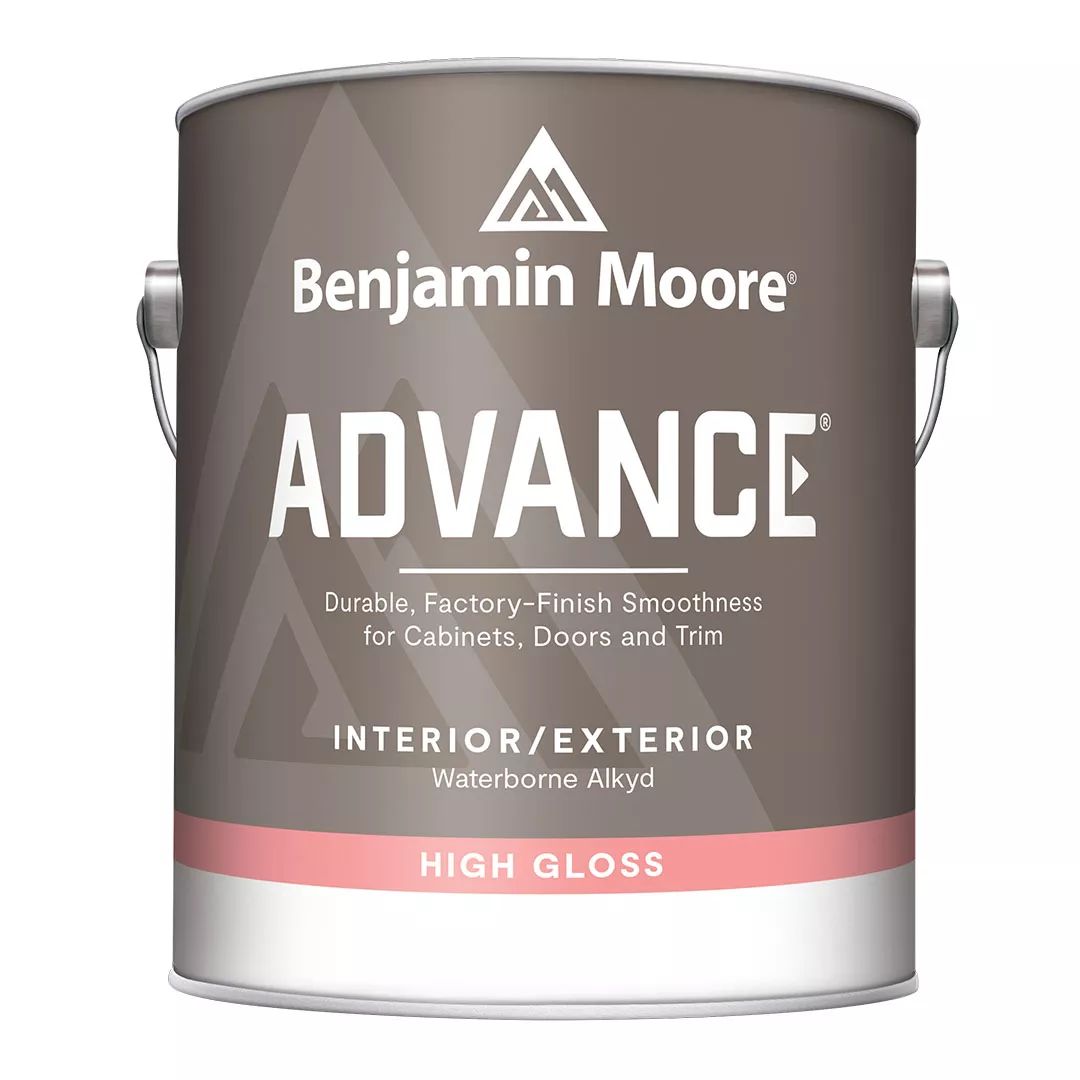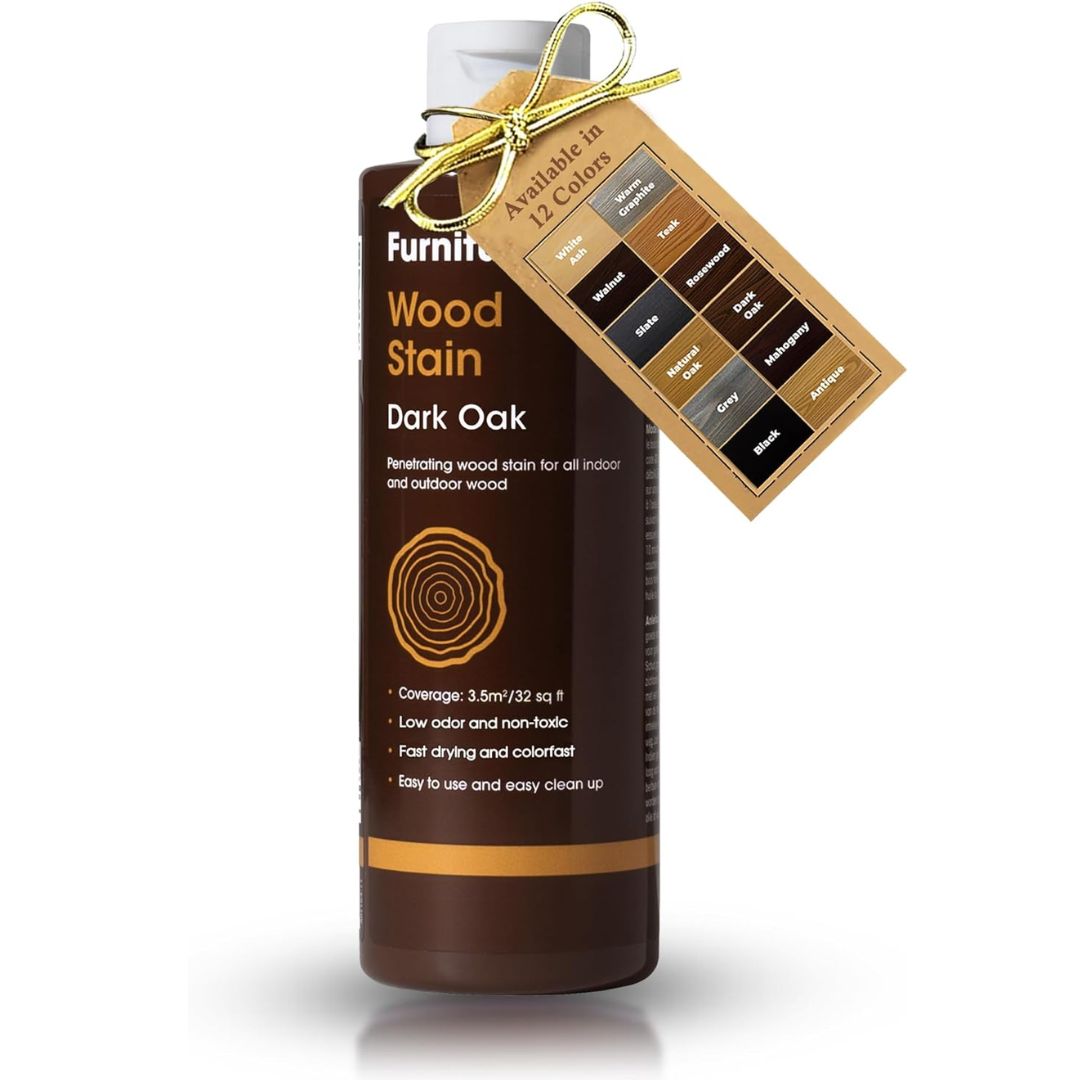Is Shaker Paneling Still in Style? These Designers Reached a Unanimous Decision
Shaker paneling was all about simplicity and practicality, but their modern interpretations are about flair, style, and versatility
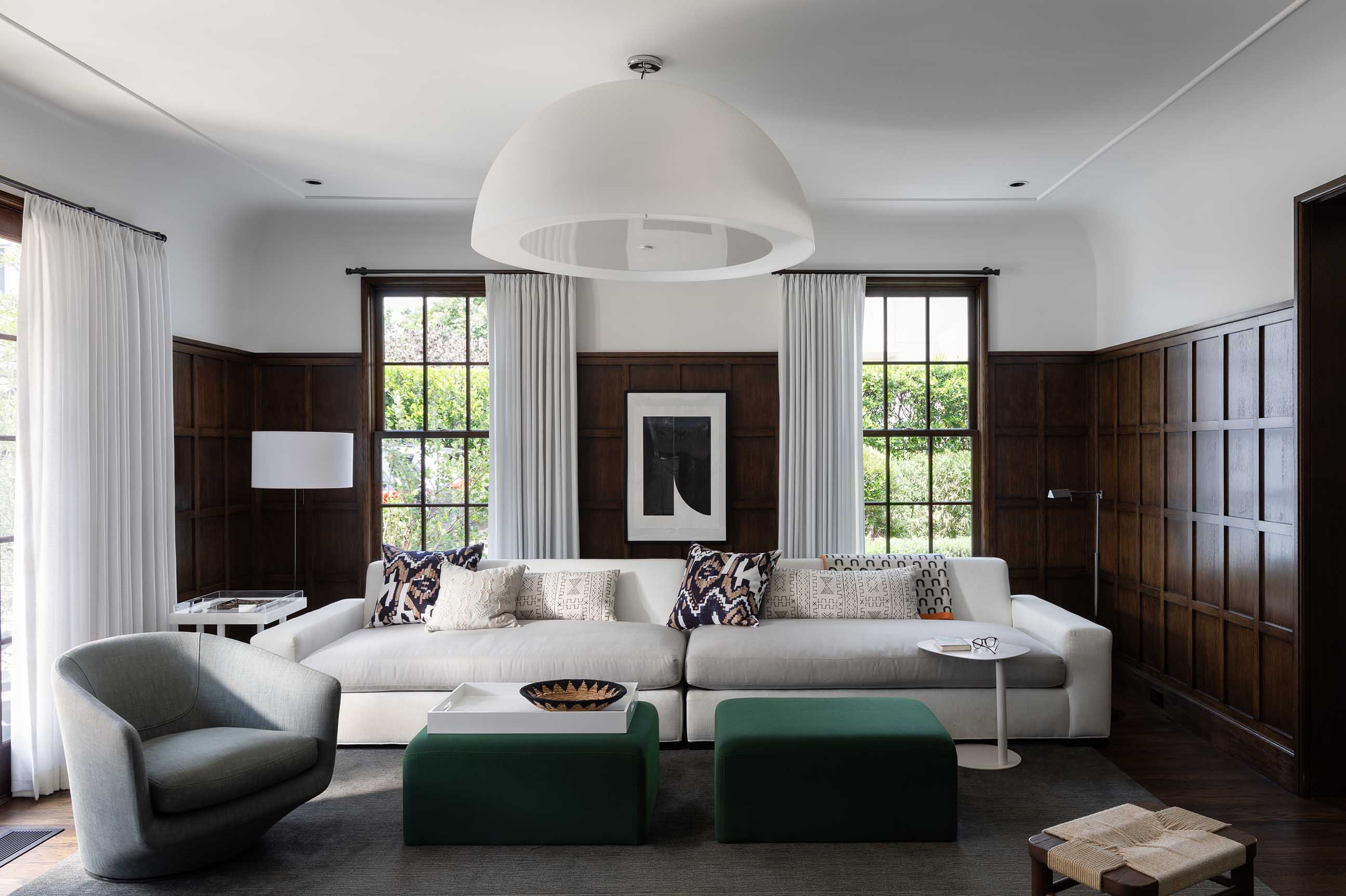
Shaker paneling’s origins date back to the 18th century, when it was first developed by a religious sect in America and was rooted in utilitarianism. Natural materials were celebrated and handcrafted into furniture and paneling, simplicity being a running red thread through everything.
Shaker paneling, applied to walls and furniture consists of a grid-like pattern of squares or rectangles. It works beautifully to add a subtle depth to surfaces while leaving enough room for other elements to shine. The design style has experienced a resurgence on Instagram and Pinterest, with users showcasing DIY tutorials as well as inspirational interiors.
The question then begs to be asked — is Shaker paneling still on-trend? To help answer this question, we reached out to experts from across the globe to understand what’s so special about this particular form of wall paneling. The short answer is — yes! But these designers have opinions about how Shaker panels should be used for a modern look.
1. IT WORKS THROUGH THE THICK & THIN
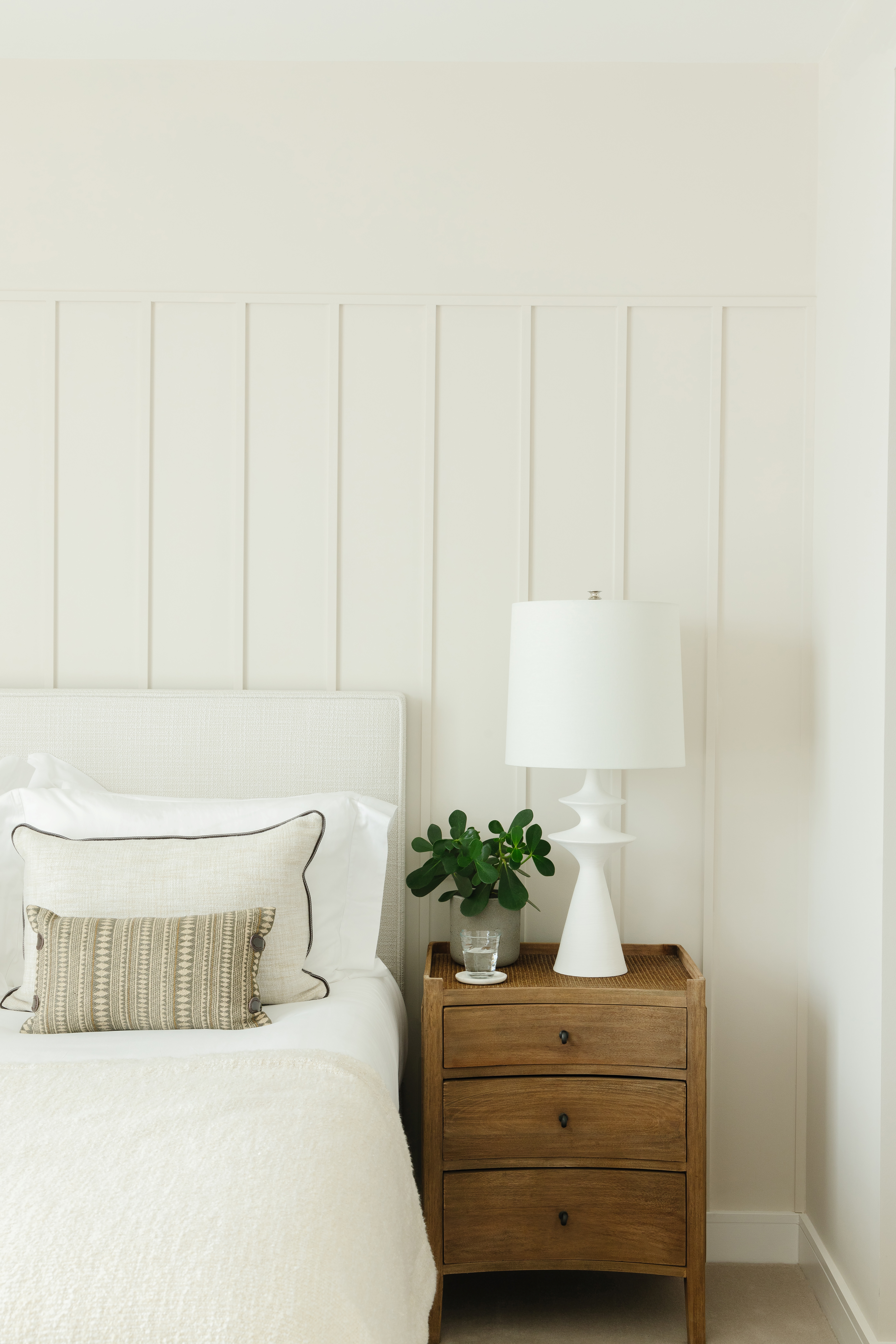
Part of what makes Shaker paneling so attractive for designers and design enthusiasts is its versatility. It can easily be adapted to various room sizes and design styles.
These charming bedroom wall panels work in both thin and thick proportions. Thicker panels work well for larger spaces but in a smaller space, the thinner panels create the illusion of a larger wall.
'Paneling is a design trend at the moment,' says Paul Dawson, design director at Honky. 'We have been working on a lot of projects with various paneling techniques. There are so many great products out there that offer you fast and interesting ways to create your own paneling designs. The Shaker style will always have its home as an architectural detail but using thinner profiles and playing with different volumes can achieve a more contemporary paneling.'
2. IT CAN BE TAILORED TO ANY DESIGN STYLE
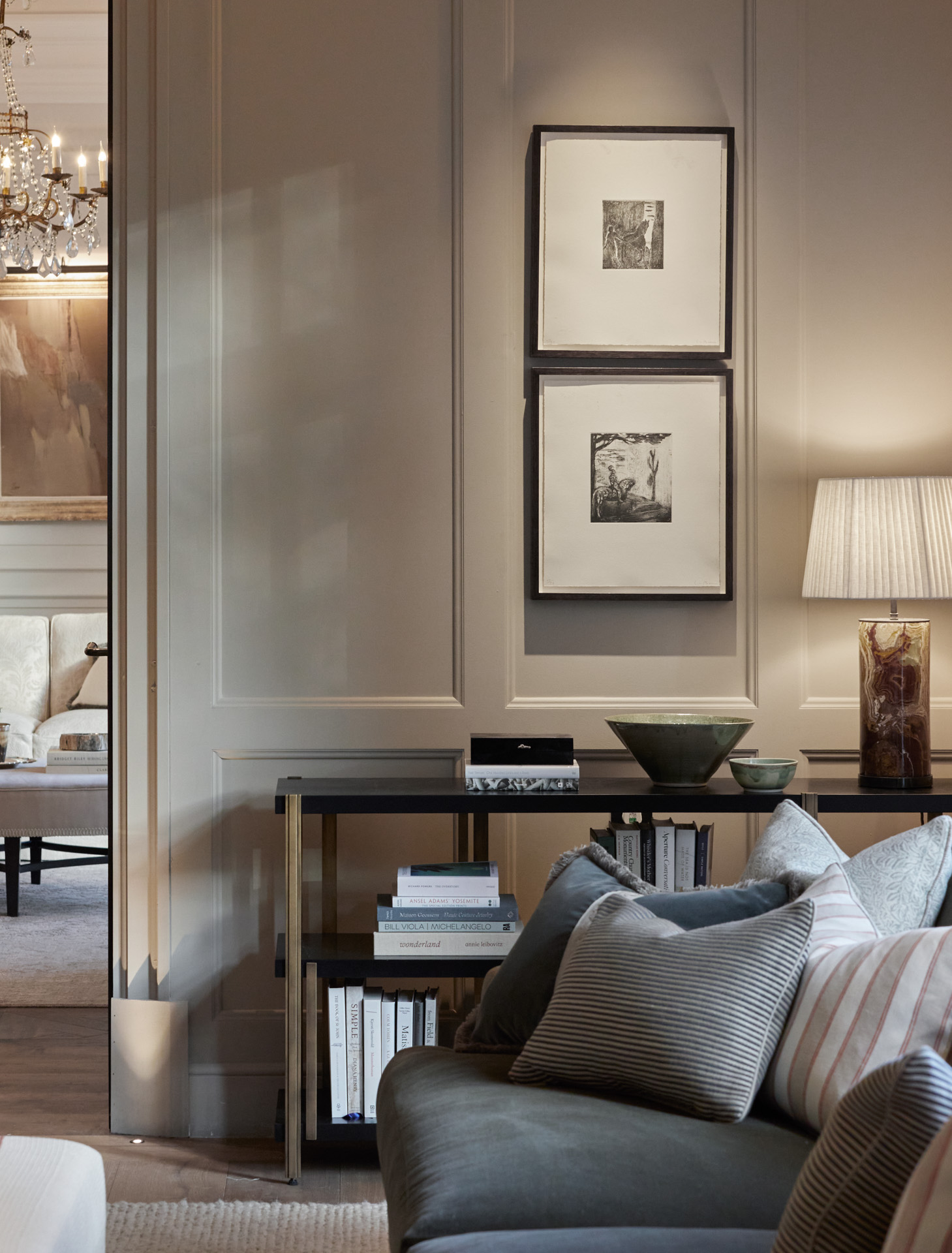
This home designed by award-winning Louise Bradley brings elegance and glamor to Shaker paneling with its use of mitered edging and soft grey paint. It serves as a great example that the Shaker style can be easily adapted to work with any design styles, even those that don’t seem like the obvious companions.
'The family room was slightly more contemporary in its design, and painted in a darker tone, it created a more informal, relaxed, and intimate atmosphere,' explains founder, Louise Bradley. 'Whereas the more traditional style paneling used throughout the dining room created the backdrop for a more formal dining space, combining an antique mirror, decorative wall lights, and marble fireplace. This space quickly became a unique place to entertain. Paneling is an excellent way to give each room its own identity; be it a townhouse or county home. It’s a timeless design technique to add warmth and sophistication to any space.'
She emphasizes understanding the DNA of your home as a starting point to find the paneling that looks and feels most authentic. 'When selecting paneling, opting for a style that compliments the architecture of the property is key,' says Louise. 'We often incorporate paneling into our design schemes, and each design is different, be it contemporary or traditional. Paneling adds a sense of refinement and elegance to a space. Within this recent project, we used paneling in the formal dining room, drawing room, and family room, each for a different aesthetic.'
3. IT’S A GREAT WAY TO CREATE CONTRAST

This contemporary living room doesn’t fight the traditional dark oak Shaker paneling that wraps around the room. Where the dark oak envelops the room in warmth, the cool white ceiling and soothing upholstery give this room a more modern core.
'Shaker panels, on a small scale, were chosen for a contemporary addition to a traditional home,' says Tim Cuppett, founding partner of Austin-based studio, Cuppett Kilpatrick. 'The panels, in dark oak, contrast the minimalist ceiling.'
Take inspiration from this captivating project and consider a contrast between traditional paneling or architectural details and contemporary furnishings. You can also paint your shaker paneling in a dark rich color to recreate this look at a fraction of the cost.
4. IT WORKS WELL IN ANY COLOR

As you scroll through TikTok and YouTube videos of people renovating their homes with Shaker paneling, you'll notice the final step is usually painting the panels for a transformative look. Color and Shaker panels work incredibly well together. The panels work especially well to give richer tones a sense of formality and structure.
Softer and more natural tones benefit from the visual rhythm that paneling brings, giving them added vibrancy and energy. One such example is this inviting dining room created by Alicia Murphy Design. The shaker panels create a wonderful cocoon-like effect when the doors are closed, and add a touch of dining room color.
'Shaker paneling does a great job of straddling both traditional paneling detail and modern lines,' says Hamptons-based interior designer, Alicia Murphy. 'We use a lot in dining rooms to give the room depth and richness, but the clean lines of the Shaker paneling give that modern edge we are going for.'
5. YOU CAN MAKE IT SUBTLE OR STRIKING
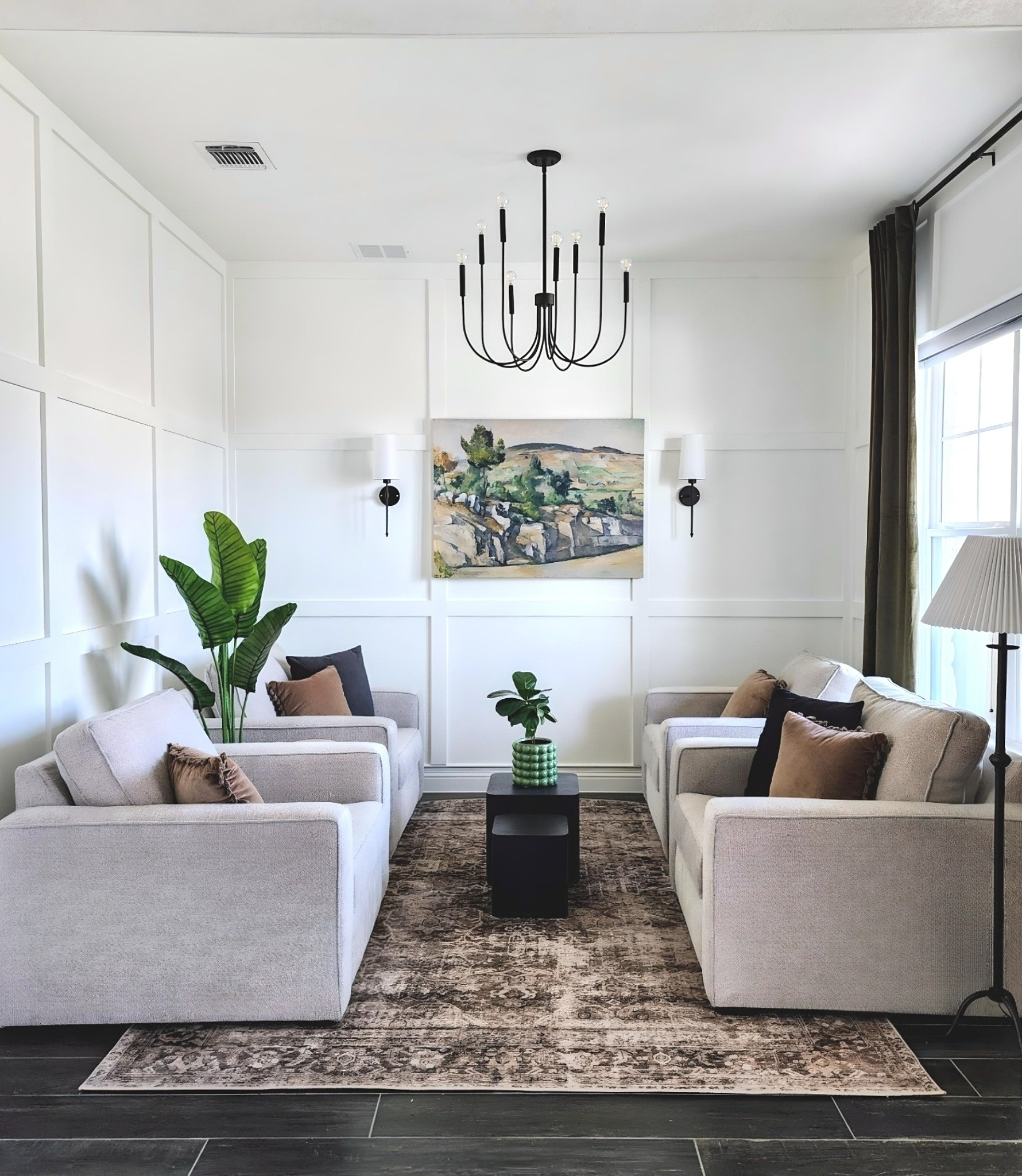
Some paneling styles can feel quite imposing on your interior but the great thing about Shaker paneling is that it can be made dramatic or subtle depending on your chosen style and color.
This modern interior from Sarah Rice Design cleverly utilizes all the structure and depth of paneling but doesn’t feel like it’s taking over the design. By painting the ceiling and walls the same color, the paneling feels like a well-primed canvas upon which to add the foreground of furnishings. Scale is another key ingredient here. By opting for larger squares, the panel pattern is as dense and creates the illusion of a larger wall and higher ceilings.
The designer behind the project points out the versatility of Shaker paneling. 'Shaker paneling is timeless,' says Sarah Rice, interior designer and founder of Sarah Rice Design. 'We have painted it in a variety of colors and paired it with different styles. Each time it delivers a sophisticated and elevated look. It's also a great way to make a small room feel larger or a large room feel cozy.'
3 products to elevate the paneling
Be The First To Know
The Livingetc newsletters are your inside source for what’s shaping interiors now - and what’s next. Discover trend forecasts, smart style ideas, and curated shopping inspiration that brings design to life. Subscribe today and stay ahead of the curve.
Writer and design expert Faaizah Shah is the founder of The Interiors Consultancy. She has worked with designers such as Staffan Tollgard and design houses such as Sanderson to help them understand and communicate their narratives. She is known for crafting engaging stories and imaginative content, and understanding great decor from her years alongside some of the best creatives in the industry. She is also a contributor to Livingetc.
-
 Turns Out the Coolest New Café is Actually In Your Kitchen — Here's How to Steal the Style of TikTok's Latest Trend
Turns Out the Coolest New Café is Actually In Your Kitchen — Here's How to Steal the Style of TikTok's Latest TrendGoodbye, over-priced lattes. Hello, home-brewed coffee with friends. TikTok's 'Home Cafe' trend brings stylish cafe culture into the comfort of your own home
By Devin Toolen Published
-
 5 Bathroom Layouts That Look Dated in 2025 — Plus the Alternatives Designers Use Instead for a More Contemporary Space
5 Bathroom Layouts That Look Dated in 2025 — Plus the Alternatives Designers Use Instead for a More Contemporary SpaceFor a bathroom that feels in line with the times, avoid these layouts and be more intentional with the placement and positioning of your features and fixtures
By Lilith Hudson Published
